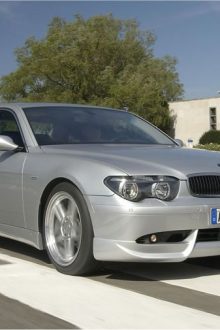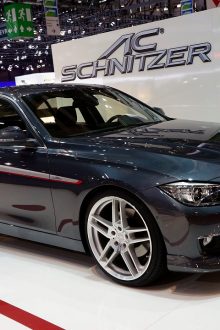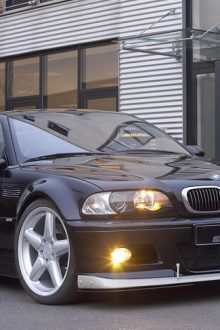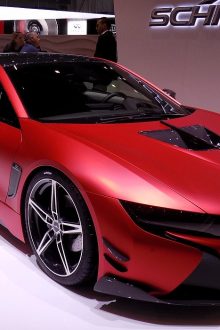AC


Few names in British motorsport carry the weight of AC Cars. Born in the workshops of West Norwood, London, AC emerged from humble beginnings to forge an unmatched legacy in sports car manufacturing. The company’s journey from bicycle workshops to creating some of the most sought-after sports cars showcases British engineering at its finest.
This storied marque holds a unique position in automotive history. While other British manufacturers focused on mass production or ultra-luxury segments, AC carved out its niche by building highly engineered, hand-crafted sports cars that combined racing performance with road-going practicality. Their approach would later inspire countless imitators and shape the modern sports car landscape.
Legacy of Performance
AC’s racing pedigree runs deep through motorsport history. The company’s first major racing success came in 1922 when an AC took the Brighton Speed Trials crown, setting a precedent for speed that would define the brand. Engineers at Thames Ditton pushed boundaries by developing lightweight aluminum bodies long before they became industry standard, while their straight-six engine design proved so effective it remained in production for nearly five decades.
Track success translated directly to road car development. AC’s testing at venues like Le Mans and the Mille Miglia yielded innovations in suspension geometry and aerodynamics. Their racing program didn’t just win trophies – it revolutionized how sports cars were built. The company pioneered independent front suspension in British sports cars and developed advanced chassis tuning techniques that delivered both performance and comfort.
Power delivery became an AC hallmark. Their engines, particularly the beloved 2.0-liter straight-six, combined smooth operation with remarkable durability. This powerplant proved so versatile that it found its way into everything from road cars to racing specials, each time delivering the perfect balance of performance and reliability that AC became famous for.
Racing achievements cemented AC’s reputation among enthusiasts. Victories at hillclimbs, speed trials, and international races proved these weren’t just pretty cars – they were serious performance machines. Each win added to a growing legacy that would ultimately attract the attention of a certain Texan named Carroll Shelby.
Iconic Models and Innovations
The AC Ace stands as the quintessential British sports car. Launched in 1953, its hand-formed aluminum body set new standards for aerodynamics and weight reduction. The tubular chassis provided exceptional rigidity while keeping mass centralized – engineering principles that remain relevant today. Light, nimble, and perfectly balanced, the Ace showed the world that high performance didn’t require massive engines.
Then came the game-changer – the AC Cobra. When Carroll Shelby approached AC about fitting American V8 power to the Ace chassis, few could have predicted the resulting impact on automotive history. The Cobra didn’t just win races; it rewrote the rules of sports car design. Its combination of British handling finesse and American muscle created an entirely new category of performance car.
Technical innovation drove every AC model. The company’s early adoption of all-independent suspension delivered handling that competitors couldn’t match. Their mastery of aluminum bodywork allowed for complex shapes that were both beautiful and functional. Each car represented countless hours of development and refinement, resulting in vehicles that performed as good as they looked.
Engineering excellence showed in the details. AC’s brake systems were among the first to use servo assistance effectively. Their chassis designs incorporated crumple zones before safety regulations required them. Even seemingly simple components like door hinges received obsessive attention, resulting in cars that felt special from the moment you grabbed the door handle.
Modern Evolution and Collector Appeal
Today’s AC Cars bridges heritage with innovation. Limited-edition continuations of classic models use modern materials and manufacturing techniques while maintaining traditional craftsmanship. These vehicles combine original design elements with updated safety features and improved performance capabilities, satisfying both collectors and driving enthusiasts.
Investment potential in classic ACs continues climbing. Original Cobras command seven-figure prices, while well-preserved Aces and Acecas show steady appreciation. The market particularly values authenticity – cars with documented history and original components attract premium valuations. Restoration expertise becomes increasingly valuable as these cars age, with specialists developing new techniques to preserve originality while ensuring roadworthiness.
Maintaining these classics requires dedication but rewards owners with unmatched driving experiences. Each model offers unique characteristics – from the sophisticated purr of a Bristol-engined Ace to the thunderous roar of a 427 Cobra. Ownership connects enthusiasts to a rich history of engineering excellence and motorsport achievement.
Recent market trends show growing interest in early AC models. Collectors recognize the historical significance of pre-war cars, while post-war sports models attract drivers seeking analog experiences in an increasingly digital world. This diversity of appeal helps maintain strong values across the entire model range.
Engineering Excellence Endures
AC Cars exemplifies the best of British automotive tradition. From lightweight construction to advanced suspension systems, their innovations continue influencing sports car design. Each model tells part of an ongoing story about pursuing performance through intelligent engineering rather than brute force.
The brand’s influence extends far beyond its production numbers. Every modern sports car with an aluminum body, independent suspension, or focus on power-to-weight ratio owes something to AC’s pioneering work. This legacy of innovation, combined with unmatched racing heritage, ensures AC Cars remains a benchmark for automotive excellence.


















